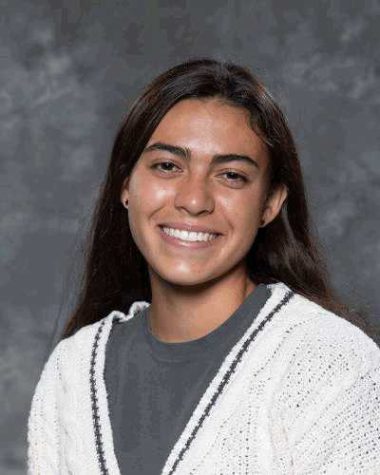Framed Injustice
America’s art museums have spent the past two decades grappling with gender and racial inclusivity. Students, faculty and professionals discuss a lack of diversity at different levels of art.
May 30, 2021
Raisa Effress ’23 picked up a large cardboard box filled with various props before leading her model through the doors of the Leica Gallery Los Angeles and out into the bright morning light. Setting up her own photography equipment, she expertly adjusted the lens of her camera and directed the model away from the glare of the sun. It was not until she lowered her camera that she became aware of curious side-eyes from her peers, all but one of whom were male.
Students discuss the impact of gender imbalance in art institutions
“It was that moment when I realized [the men at the photography workshop] were really surprised that I was able to take charge of situations and direct my models,” Effress said. “It really shaped my understanding of the way people view women in art. I had only recently begun to note gender disparity in art, and especially [within] major [American] art museums, where most of the art that we see is by men […] I remember the model told me she was so happy to see a young female photographer making waves in a persistently male-dominated field.”
According to 2019 statistics released by Data USA, women make up 60.8% of students earning visual arts degrees; however, on average, only 11% of art acquired by major United States art museums over the past decade were works by female artists.
Effress said that as an aspiring artist, the gender imbalance that exists consistently across acclaimed art institutions has made her goals feel unattainable.
“[Looking back on] my experience with museums, I would walk into a room filled with all of this amazing contemporary art, and I’d look around and not be able to relate to any of the artists, who were all male,” Effress said. “It can definitely be discouraging, because it seems like the goal of becoming a professional artist is even further out of reach.”
While Effress said she has been challenged by the lack of female representation in visual arts, Victoria Peng ’23 said she does not view the underrepresentation of women as a barrier to her own success as much as a frustrating lack of visibility.
“I think the beauty of going into a museum is that the person who painted the piece you’re looking at is just a little nameplate [to] the side,” Peng said. “You don’t really look at [the name] first. But, [at the same time], knowing that you’re just seeing the world from the perspective of a white man whenever you enter a museum is a little discouraging because you don’t exactly see your own perspective.”
Students and faculty analyze the roots and consequences of limited diversity in art
Similarly to Peng, Upper School Visual Arts Teacher Alexandra Pacheco Garcia stressed the importance of museums diversifying their acquired works in order to appeal to a variety of perspectives. Pacheco Garcia said it is invaluable for people of all backgrounds to be represented in art and culture and believes that the permanent collections in many of Los Angeles’s acclaimed art institutions inaccurately reflect the city’s diversity.
“Historically, the perspectives in places like museums have been very white, male and heteronormative,” Pacheco Garcia said. “[There] is a very narrow presentation of experience that is alienating if you exist outside of that historical canon. Cumulative art shows are so telling [of a museum’s diversity] because most of those works are by white men. I just think it’s interesting that in shows of permanent collections, I tend to notice a lack of diversity and gender inclusivity.”
Joey Schoenberg ’22 said he believes artists benefit from greater opportunity and recognition when their work is acquired by prominent art institutions. However, he said he has come to notice that a majority of artists represented by acclaimed modern art galleries and museums are both white and male. Schoenberg said the diversity of his mother’s self-curated gallery has led him to question the roots of inadequate racial diversity in art.
“It’s a symbol of the status of your art, that you’re worthy enough to be in a museum,” Schoenberg said. “When your art is in a gallery or a museum that gets a lot of visitors, you [expand] your platform. My mom owned a photography gallery, and I think she was good about finding diverse [artists], but she wasn’t looking in particular for diversity; she was looking for art that she liked, and I feel like [any lack of diversity] is more the system’s fault than her fault because there are just more white applicants and more white artists than there are [artists] of other races.”
Schoenberg said a system of racially inequitable education and pay is primarily responsible for the lack of diversity in museums’ permanent collections.
“College and graduate school to get your Master of Fine Arts (MFA) just costs a lot of money,” Schoenberg said. “On average, white people make more, so they have the means to send their children to graduate school, but a lot of families in [racial] minority groups can’t afford it, so they go out as artists without actually earning a degree, which can affect how [desirable] museums consider their art.”
Pacheco Garcia said her own experience earning a degree in the fine arts was characterized by a lack of racial diversity among her peers.
“As an MFA candidate, [in] my incoming class, less than a third of us were self-identified people of color,” Pacheco Garcia said. “Most of my educational experience, [I was] one of a handful of Brown folks in predominantly-white educational spaces, so seeing that at the highest level was not shocking, but it was disheartening.”
According to Data USA, 54.1% of artists who have earned a bachelor’s degree or higher in visual and performing arts identify as white. However, a study published by PLOS One in 2019 revealed that white artists make up 85.4% of those represented across 18 of the United States’ major art museums, while artists of Asian descent constitute 9%, Latinx artists 2.8% and Black artists 1.2%.
Communities benefit from greater inclusivity within the art world
Los Angeles County Museum of Art (LACMA) Curator and Department Head of Art of the Middle East Linda Komaroff said that historically, museums have often failed to preserve the creativity of certain races and genders. Although Komaroff does not believe that representation of a visitor’s identity in a museum greatly affects the appeal of the institution as a whole, she said increasing diversity does have the potential to engage a wider audience.
“I don’t think members of the public visit art museums exclusively to see themselves in the art; however, it certainly increases their level of interest and engagement,” Komaroff said. “[It can also affect their] ability to feel comfortable and welcomed when at least some of the works of art and their creators reflect their own cultural background or heritage.”
While Komaroff said she does not believe visitors are drawn to museums solely for works that reflect their own cultures and identities, she said diverse art has the potential to build empathy and connections between different groups of people.
Similarly, Visual Arts YoungArts Winner Kacey Kim ’21 said increasing representation among artists is imperative to understanding outside perspectives and believes that increasing accessibility to art will naturally lead to greater diversity.
“I once had a conversation with the artist Chire Regans,” Kim said. “I remember her saying that she chose to use a public space because it was more accessible to the audience and that there are many that feel uncomfortable entering into a gallery because those spaces are not dedicated to that demographic of people. If we began to include more voices of marginalized artists, then viewers who share the same story may feel more invited to come into these spaces.”






























